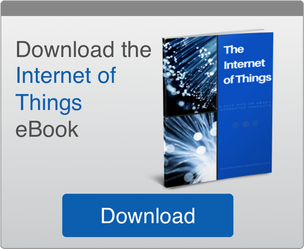 Sometimes it can feel like we’re all swimming in data. Getting on top of it all is a major challenge for many manufacturers. And, with the advent of smart, connected products, the amount of data available is only going to grow. There are several important features to consider when deciding what new data to capture, what needs analysing and how to use this information to develop a unique position for your business.
Sometimes it can feel like we’re all swimming in data. Getting on top of it all is a major challenge for many manufacturers. And, with the advent of smart, connected products, the amount of data available is only going to grow. There are several important features to consider when deciding what new data to capture, what needs analysing and how to use this information to develop a unique position for your business.
There are three sources of data to consider when implementing a data strategy for smart, connected products. These are external data, enterprise business system data, and smart, connected product data. All three forms of data help in value creation and competitive advantage, which can be used and processed in conjunction with smart, connected products. With so much potential value at stake, the key is to understand what goes into implementing a data strategy, so you can make an informed decision for your business.
Introducing a data strategy: There is no “one size fits all” solution
When businesses take steps to optimise their manufacturing systems, there is no “one size fits all” solution. Businesses need to focus on a data strategy that supports their unique position. For example, a business that concentrated on product performance may want to analyse data in real time in order to optimise products and to prevent product downtime. Alternatively, a strategy that’s built around a product system or a ‘systems of systems’ strategy needs to be able to collect many types of data from many different sources. So it’s important for businesses to identify and understand which data strategy can support their current position.
Three key costs to consider when choosing to capture and analyse data
Inevitably, when implementing a data strategy, there are costs involved:
- Firstly, hard costs involve investments in sensors for capturing data, data transmission fees for pushing it across cellular networks, or storing data up in the cloud. These hard costs are essential for introducing data analytic capabilities into your manufacturing processes.
- Secondly, anything that becomes connected becomes a target for hackers, so businesses have a responsibility to protect users from this threat. Therefore, businesses need to invest in security measures and risk management to prevent possible threats to captured data.
- Thirdly, businesses need to have the right set of skills and infrastructure to perform analytics in order to achieve value from collecting the data.
Possible solutions for your business’s data strategy
To implement a data strategy into your manufacturing processes, it is wise to start small and try to document the specific use-cases across your enterprise – the places where you can generate real value. For instance, it might be automated consumables or dispatching service technicians to perform predictive maintenance and remote diagnostics. Think through those use-cases and try to establish what are the best ways to create value.
Then calibrate the scope of your efforts according to some of the hard costs on data transmission and storage. Perhaps evaluate your data strategy with a pilot programme, and then refine it for maximum value. Typically, it makes sense for those who are mature in their capabilities and understanding, to make tweaks in strategy, before implementing it on a larger scale. So as you collect more data, amend your data strategy depending on your new understanding and insight.
It is widely accepted that businesses who capture, secure and analyse data can maximise the value of their product and service offerings. But it is important to recognise the costs involved in implementing a data strategy and also the benefits - supporting your unique position in your industry.
